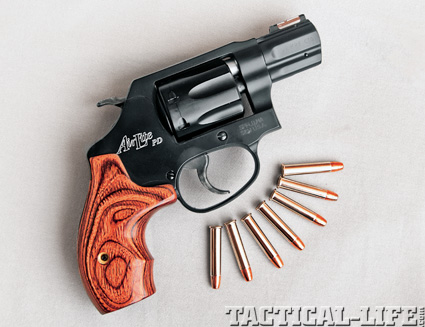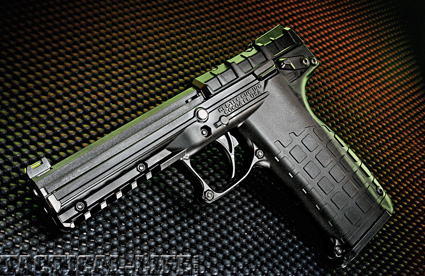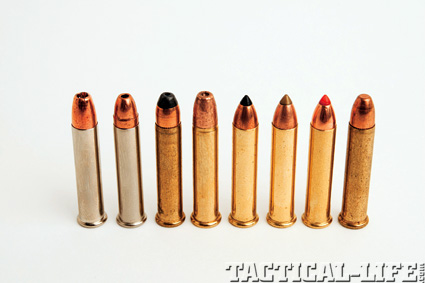A variety of bullet weights and styles are available for the .22 Mag; (left to right) Speer’s 40-gr. Gold Dot HP, CCI’s 30-g. JHP, Winchester’s 40-gr. JHP, Winchester’s 45-gr. Dynapoint, CCI’s 30-gr. V-Max, Remington’s 33-gr. Accutip-V, Hornady’s 30-gr. V-Max, and Winchester’s 40-gr. FMJ.
In January of this year, Speer announced the release of a new addition to their Gold Dot Short Barrel Personal Protection ammunition line. But being a .22 Magnum, it’s not a cartridge most would have expected to see with a self-defense-label on the box. Yet Speer is one of several companies preparing .22 Mag loads earmarked for the self-defense market, and this sudden advent of defensive grade .22 Mag begs an important question: Do pistols chambered for .22 Mag make sense for self-defense?

With its 7-shot cylinder and unloaded weight of just 10.8 ounces, the Smith & Wesson 351PD is a reliable, lightweight, low-recoil, self-defense option when fed with proper .22 Mag ammo.
Advertisement — Continue Reading Below
Cartridge History
Often referred to as the only successful rimfire cartridge of the 20th century, the .22 Winchester Magnum Rifle (WMR) was introduced to the shooting market by Winchester in 1959. It was designed as an improvement to the older .22 Winchester Rimfire (WRF). Though originally intended for use in rifles by small game hunters, it soon found its way into handguns.
The .22 Mag is regularly compared to its smaller and more popular cousin, the .22 Long Rifle (LR). Though both are rimfire cartridges, the .22 Mag has a longer case, thicker case walls, and a larger bullet diameter that produces much higher levels of pressure than the .22 LR. The original 40-grain bullets traveled at over 2,000 feet per second (fps) from rifle barrels. As a result, it has more energy at 100 yards than a .22 LR does at the muzzle.

At 13.6 ounces unloaded, the Kel-Tec PMR-30 is a lightweight autopistol boasting 30+1 firepower of .22 Mag. Sean Utley Photo
Advertisement — Continue Reading Below























